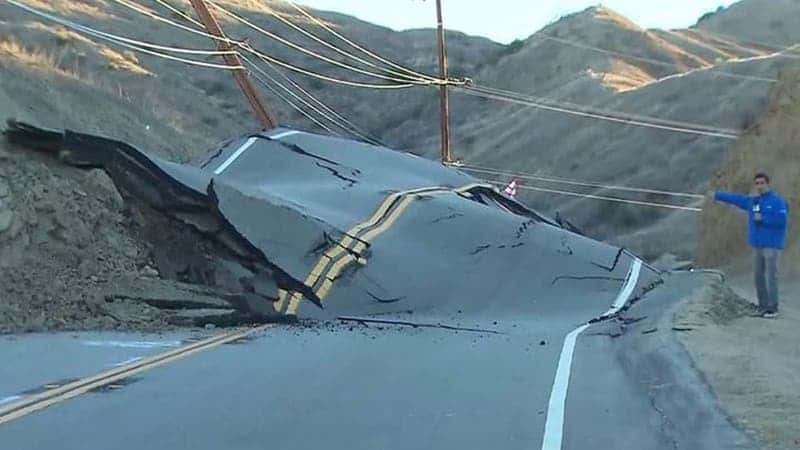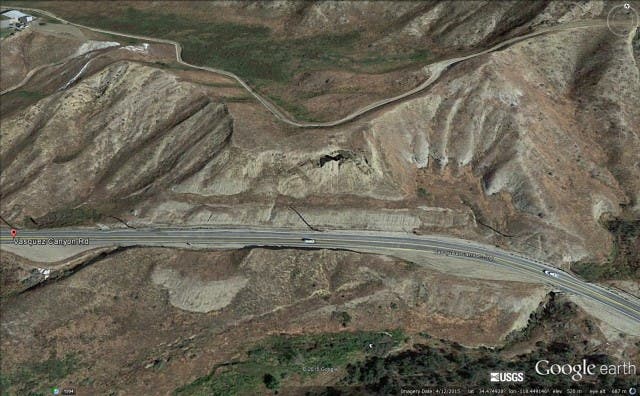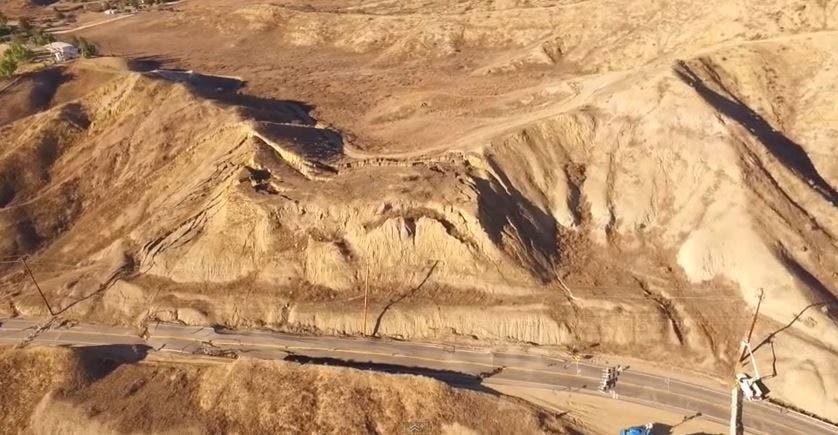If you’ve been following the news lately (especially science news), the odds are you may have come across images of this California road, deformed to the point where some sections of it are basically vertical. “Scientists are baffled”, “geologists left scratching their heads”, you know – that kind of headline. Well, the whole thing happened quite quickly (in a matter of hours), but now, after a few days, geologists have a fairly good idea what’s going on.

It all started last Thursday, November 19, when motorists called the California Highway Patrol, alerting them that some sections of the road are lifting and warping. During the next couple of days, the road kept warping more and more, lifting as much as 15 feet (4.6 meters) in some sections.
Obviously, whatever happened had a geological cause (and not a huge underground creature, like Dune fans may be thinking), but in this case, there was no obvious geological event, nothing apparent that could trigger this change. To make things even stranger, geologic events usually happen extremely slow (on a geological time scale, duh!), but this one happened extremely fast. UCLA professor Jeremy Boyce recently visited the site with his students and he said:
“When we think about geology, we think about processes that happen over millions and billions of years, so the opportunity to bring students out and see something happening over a scale of hours gives them the idea that not only does geology take forever, it can also happen almost instantaneously.”


So this leaves us with one question: what caused it?! Geologist Dave Petley from the AGU Landslide Blog believes the cause is a progressive landslide, although one without an obvious trigger, and this seems to be the most likely scenario.
“The landslide, which appears to be progressive and has no obvious recent trigger, has caused extensive buckling of the road, which has been closed over a three kilometre stretch,” he writes.
But although this deformation seemed to happen extremely fast, the mechanisms that generated it acted for much longer. Even back in 2011, you could see massive longitudinal cracks along the same section; more recently there have been clearer signs of instability, with minor landslides taking place in the area, so it’s probably a case of the slope losing stability. Of course, the road is closed for now.

Geologists will definitely have a better look at this one, but whatever the results will be – geology is shaping the world around us, and we’d best heed its warnings.


